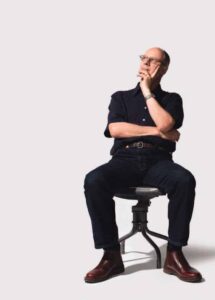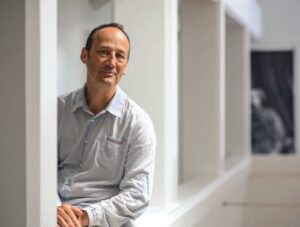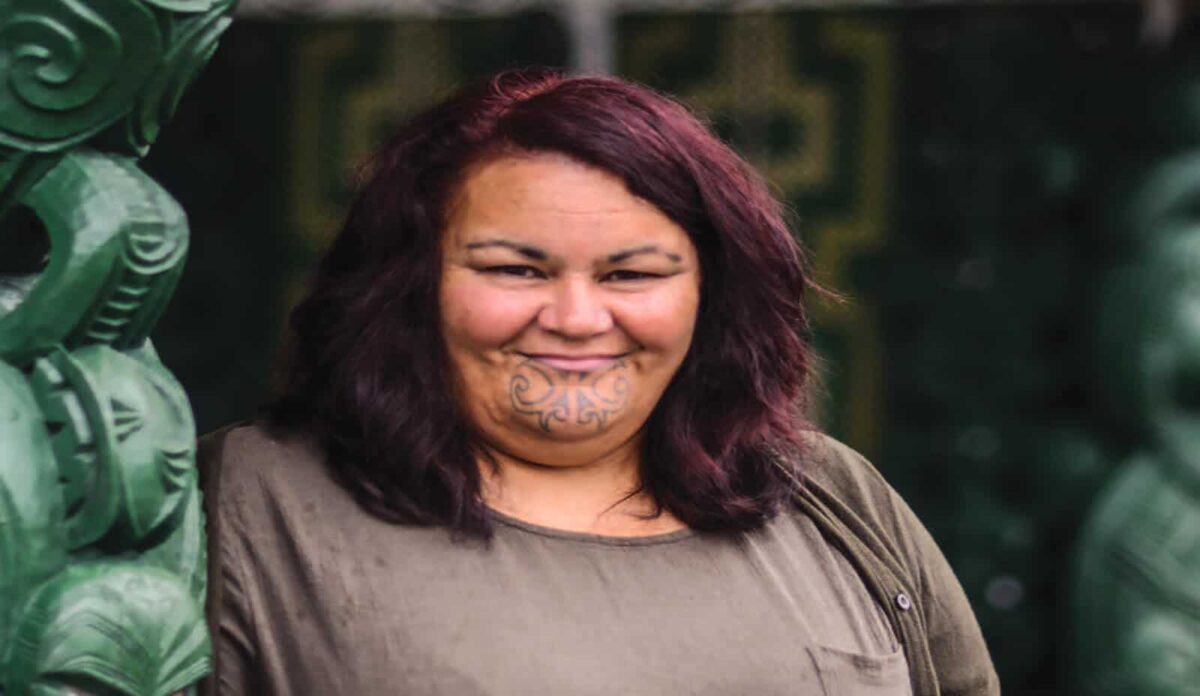As probably New Zealand’s best known playwright – and a part-time resident of the Bay – he has a point. There are of course many amateur groups in the region which produce remarkably good works, but the drawback for a professional group is finance.
Regular theatrical production requires funding … on a large scale. Take the Auckland Theatre Company. A prime example with its huge administrative staff, vast programme including education, and a juggling of performances to ensure the o eat is balanced by the mainstream. Plus a multimillion dollar budget to go with it.
This is not what Roger has in mind. He is realistic about what’s achievable. “Tadpole in Auckland is quite a good model. Two shows a year at the Pump House Theatre – a regular venue which provides identity for both. There is a large pool of actors to choose from, including name ones that bring in the audience, which helps. Six in the cast is affordable, four is better, but even then it still can be hard to make a profit.”
His concept is to start small with plays that have proven box-office appeal to the main theatre-going audience, “which tend to be older middle-class.” The secret he feels is to cast well, maybe invite a ‘name’ actor – someone such as local Stuart Devenie would do that. “And don’t try avant-garde risky plays. A single box office flop can set a company back badly.”
“Most, like Downstage, have started with a group of individuals committing to a particular sum. A 500 Group for instance, approaching many to support with $500, can capture interest. Keep committees small and workable. Invite council support once established, not too soon.” He subtly avoids voicing the unsaid obstacle – the (in) ability of the Napier and Hastings councils to join forces in the area of the arts. So far this has proved to be an elusive objective; aspired to maybe, but achievable? It remains the elephant in the room.
With this as the challenge, when put to three of Hawke’s Bay’s arts afi cionados it certainly proved provocative. And staged a dialogue about a much broader vision – not simply about a theatrical group, but the general status of the performing arts as a whole, with the suggested company as part of that entity.
Ken Keys

Founder of the National Youth Drama School, director of Hawke’s Bay Youth Theatre, guest tutor at the Shakespeare Globe Theatre in London and the International Theatre Festival in Maryland, Ken Keys is now an established Bay resident of some decades. Well qualifi ed and informed about the NZ theatrical scene. His immediate reaction? “This is a subject which should not be looked at in isolation. Rather view it in conjunction with the Opera House as part of a performing arts centre. A professional theatre group would fi t perfectly within that concept.”
He has been promoting such an idea since the beginning of the nineties, when EIT set up a drama course and needed a venue. “I proposed this venue as a hub for all of Hawke’s Bay. A catalyst for the arts community in general. A single overall performing arts and recreation centre with such things as yoga and pilates joining forces with all the other creative arts – the marvellous large spaces where Hutchinson’s used to be are perfect. And if there are places for regular tenants, there is a surety of income.”
“But it goes beyond that. With the centre of Hastings having been killed o by the Big Box commercial centres, it needs a revitalisation. A vibrant arts centre operating 24/7 involving all sectors and all ages of the community would go a long way to bringing life back into the city.”
“However, it needs a sea-change in thinking from those in charge. One in which the complex is seen as a vital community facility not just a corporate or commercial venue. Of course the Opera House would do the big shows; after all, it is one of the best venues in the country. But that model, which it has blindly pursued for the past 20 years, is not the future.”
Ken strongly believes philosophical conflicts during the past management regimes has hindered progress. “New initiatives began during Megan Peacock’s time – notably the Black Box Theatre – and discussions with those involved in local theatre and schools were instigated in relation to connection and venue use. And Glen Pickering also envisaged the need to change the focus from commercial/ corporate to the community.”
“But it comes down to finance. Maybe if we could look at the figures which relate to how much use the various rooms in the complex have had over the past 20 years – the Shakespeare Room, the meeting rooms, the stage itself, the foyer and the plaza? And then there is the ratepayer issue. What are the costs for the maintenance of the other municipal facilities in the general infrastructure of the city – parks, playing fields, roads, water etc., etc. versus the arts?”
“To me the concept of a performing arts and recreation centre (in this case the Opera House) should be included as part of any dynamic civilised community’s infrastructure. So much is happening now in community arts – the arts festival, the art gallery, the National Youth Drama School and they are being supported. But there is the question of available space. The Opera House is a ‘gift horse’ that should not be ignored.”
“Roger’s idea of a professional theatre is timely and should be seriously considered as part of the new Opera House Centre. Since the demise of Group Theatre in the 80s there has been a gaping hole. Playhouse does a great job with small scale musicals and light comedy and Little Theatre is producing really good challenging straight theatre. But otherwise?”
“With a population of 150,000 or so we should be able to support a professional or at least a semi-professional theatre of some kind. Centrepoint in Palmerston and The Fortune in Dunedin confirm this. As have people like Jose Aparicio with his high quality opera. The successful mixing of professional leads with local amateur groups can also lend itself to straight theatre. And there is no doubt the hunger is there, as Pitsch Leiser’s arts festival has shown. 12,350 people over two weeks with a wide range of theatrical productions drew many who are rarely seen at local events.”
“The attraction was the variation in choice – challenging, innovative, thought provoking. A performing arts centre with a theatre company project which has its base in the complex is the perfect combination. And with Roger as the public face of it? Now that is a thought.”
Puti Lancaster
Puti Lancaster sees herself as a maker. As the director of the River Seeds Collective – a performance group which gathers in Heretaunga to bring local stories to life – she has high standards and insists the fresh pieces they create must have a strong arts value with high quality art pieces. “The common point is telling a story. There is a lot of beauty in the local areas in our country but these are also very fragile qualities and they must be portrayed with care.” Edge of a Raindrop, which was produced for the arts festival and was part of Te Matatini, typifi es this philosophy, telling the tale of a water world fi lled with streams, rivers and lagoons which lay below the Heretaunga Plains.
So it should be no surprise, given her strong convictions regarding her heritage, that when she heard of Roger’s challenge her immediate response was “what would it look like, not just as a theatre group, but as a group unique to this region?” So, her choice would be an arts performance collective which focuses on Hawke’s Bay’s legacy, hence bringing an identity to the Bay’s arts force based solely on its cultural history.

Having gained her Masters in Theatre Arts at Victoria Uni, Puti has been closely involved in Maori language production ever since. “I feel it is so important to retain a sense of who we are.” Having been accepted at the MTA was a huge step in this process, “where I started testing things and expanding my vision as an artist and a director in all art forms – design, visual, storytelling. I was a more mature student,” she says laughing, “but it united who I am and me as an artist because I had the freedom to explore. Because I was older (at least 20 years) I knew what I was hunting for and what made sense.” The beginnings of her interest in the theatrical presentation of her heritage began when she was a youth worker, which led to social counselling. “The stories all around me shaped my thinking; a reflection of the place we lived putting the small tragedies and struggles into perspective.”
River Seeds focuses on finding like-minded artists interested in making a piece of work with local lore as the core. It includes actor Pereri King, designer Marama Beamish and lighting designer Janis Cheng. The collective then collaborates with others who can bring structure and truth to a particular production – as they did with Moana Munro (who is a local researcher) for Edge of a Raindrop, to depict the Heretaunga Plains’ history. Authenticity is paramount to the group. “We work together as theatre makers, but it is fi nding diverse groups within the region that is the test. The last two or three years have been good, we get ideas for stories and have produced fi ve pieces recently. The year before it was four works.”
“It is also wonderful to work with the young through the Arts Festival; they are so inspiring. A group of ambassadors who show the potential which is innate in all of us. And really it is amazing to see how they find a loving soft beautiful story emerge from a background of abuse, neglect, self loathing. It may be all there but it is finding the underlying value in all of it, remembering it, and being able to overcome it through acting which is so powerful.”
Her concern with performance art production is “the challenge of understanding the framework of different theatre forms. My values are traditional and I see the best in people and want to see this in the theatre. River Seeds Collective is a platform to communicate … seek a relationship with the audience … find a way that brings everyone into a sense of involvement that is non-confrontational. The stories that are all around us reflect the place we live and its context; small things, tragedy, love, struggles. Our group finds a way to align all that.”
Pitsch Leiser
The concept of local story telling through theatre to provide the region with a unique approach to performance arts may be Puti Lancaster’s dream. But it was Pitsch Leiser, who enabled the group to portray this belief during the Arts Festival in October, 2016.
As Creative Hastings’ community arts advisor Pitsch’s brief is broad. The fact someone with his skills holds such a position is proof that the region’s diverse creative sector is bubbling with emerging and established artists, plus a hugely supportive arts-focused audience.
But says Pitsch, the caveat is understanding Roger’s challenge. “Let’s try to grasp the word ‘professional’. To me it is a legal entity employing actors, directors, technicians, producers being paid a wage they can live o that produces a body of work. If that is the challenge we are a wee while away from that.”
His belief is that it is not the actual enthusiasm of actors and performance artists that needs harnessing into a professional theatre group – “We already have a fertile ground full of creatives who have a passion for their work.” The issue is support – meaning strategic vision by councils to provide the infrastructure to make it happen.
“The Arts Festival pledged to produce local work and stories which created opportunities for actors to be part of that programme. A programme which would touch the souls of those who live here, eager to investigate the arts.”

So for Pitsch it is more a question of what we need in Hawke’s Bay to provide the platform on which to work for the profusion of talent available. “There are a lot of amateur groups. The Playhouse, Napier Repertory for instance, which attract good actors. But the infrastructure is fragile. Funding in particular. The threshold to be eligible for grants is high and rightly so, but maybe a different pathway is needed for unknown entities to break through. I’d like to see more for new emerging, unknown talent. What is our educational offering? Have we run out of pathways for young performers to develop a career here and stay here.”
“There has to be an audience. The Arts Festival has shown that mainstream is easy, but something like contemporary dance with unknown performers is hard (the eternal Napier/Hastings conundrum could also be fingered for this). It’s important to encourage an audience to stretch its interest with quality productions and explore new fields.”
Which again comes back to infrastructure. And the Opera House. “I’m not sure it has the capacity to house the festival, but it certainly has the capacity to attract. There is that wonderful sense of occasion the building brings. People are drawn to it; it has a sense of romance like the Spiegeltent … and an aura. It comes back to who is going to commit to it as an essential part of our lifestyle and wellbeing in the region – having the access and opportunity to produce, create and consume the performing arts. Three or four groups like River Seeds Collective, HB Youth Theatre and let us not forget the incredibly talented Project Prima Volta should have the opportunity to be seen in this beautiful venue.”
“But we need courageous leadership, ongoing education and audience development programmes so that when we get the Opera House and spaces we want, we have the support. The balance between calculated risks and sustainable outcome forms a fine line. And don’t forget the Opera House has 900 capacity, so whatever you put on there is a high baseline cost, which is fine with blockbusters, but there has to be planning to allow other works with less surety to be produced.”
The word infrastructure is voiced frequently. “Napier has theatres. Hastings has theatres. There are nonconventional performance spaces. And there are groups out there – a mix of art, visual performing artists, design. How can we find an effective way so there’s a constructive outcome. That needs assurance from those with the perspicacity to support individuals and groups. Creative NZ, foundations, trusts and lotteries are already milked.”
“Local councils need to work together on a strategy that enables smaller entities to perform; local bands, dance, pop, cultural shows. The skills and talent are there, but if you don’t have a strategy, no priorities or budget it will never happen. And unless we connect individually and as a community to produce shows in which people can see their dreams and stories on stage, it’s just not relevant.”

